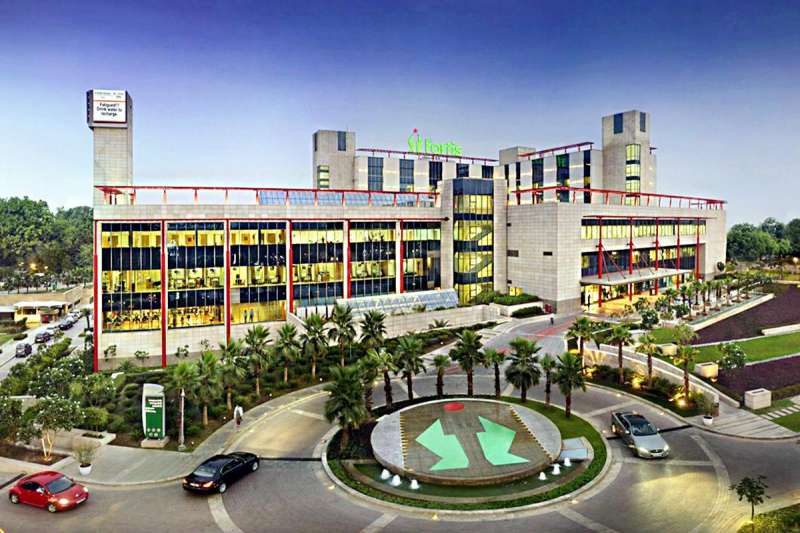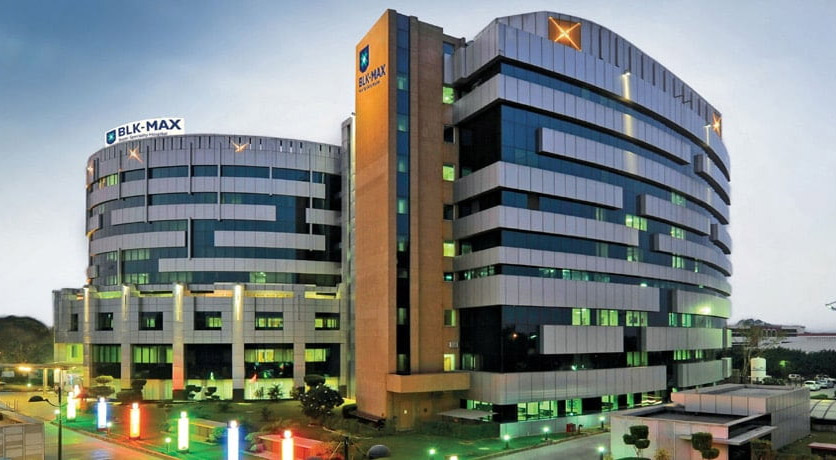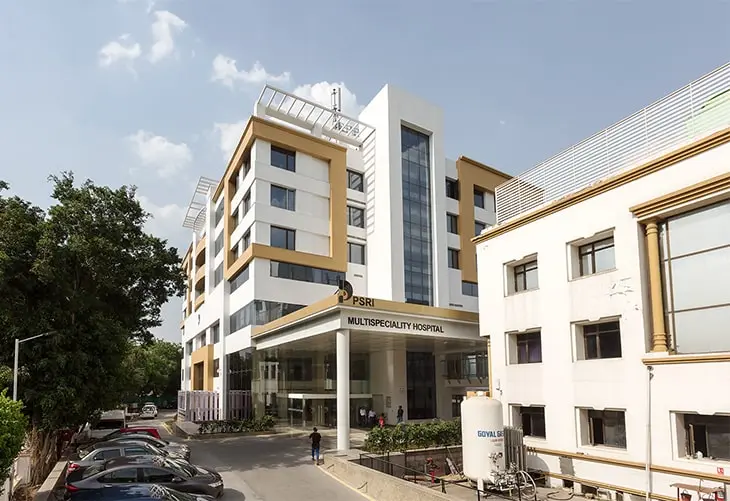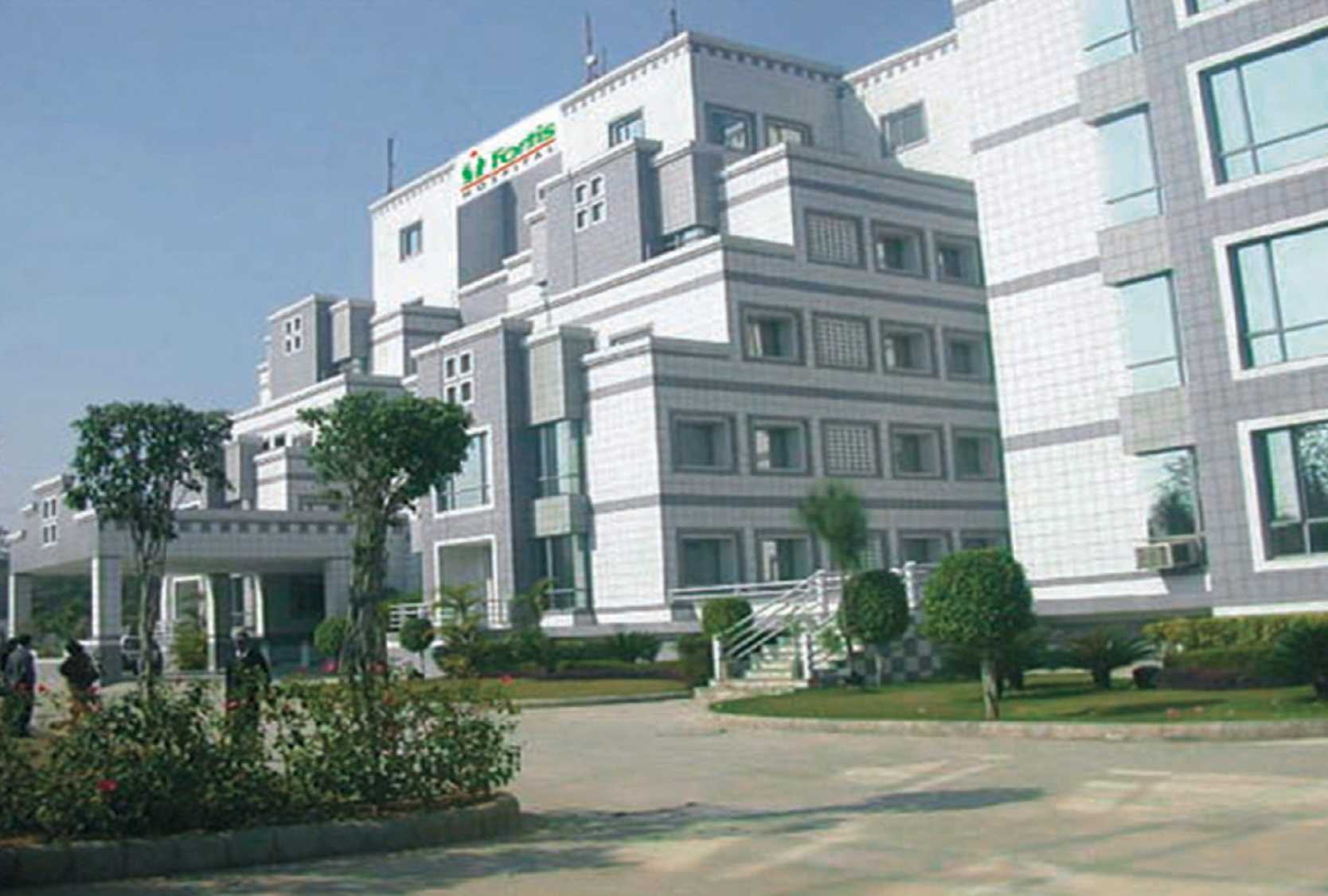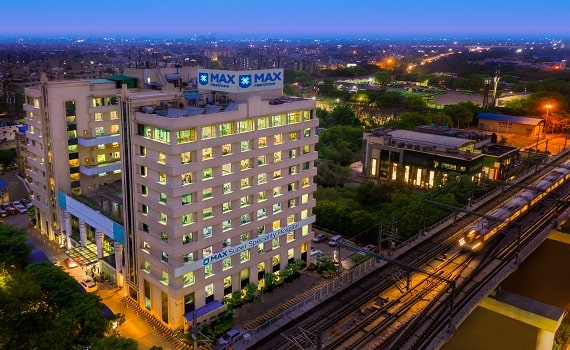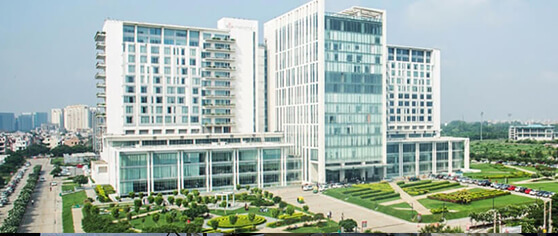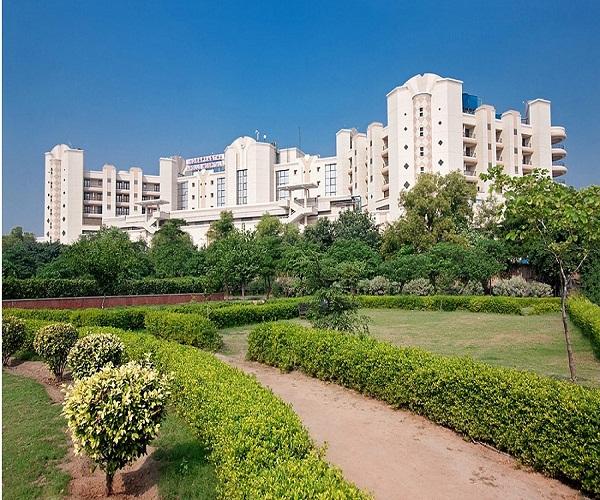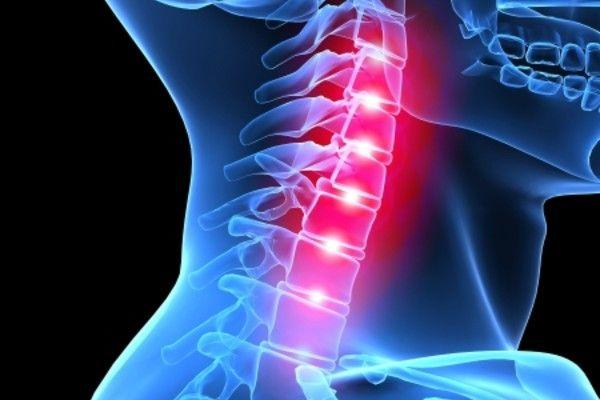1 Level Cervical Spine Decompression N Fusion ACDF cost in India
The cost of 1 Level Cervical Spine Decompression N Fusion
ACDF in
India ranges from USD 2500 to USD 6000
1 Level Cervical Spine Decompression N Fusion ACDF:
Anterior cervical discectomy and fusion (ACDF) is a form of neck surgery that includes removing a damaged disc to relieve spinal cord or nerve root pressure and the pain, weakness, numbness, and tingling that goes along with it. Because a discectomy is a type of surgical decompression, it's also known as an anterior cervical decompression.
While the most typical reason for this operation is to repair a symptomatic cervical herniated disc, it can also be used to address cervical degenerative disc disease. It's also routinely performed to remove arthritis-related bone spurs (osteophytes) and relieve the symptoms of cervical spinal stenosis.
1 Level Cervical Spine Decompression N Fusion ACDF:
Anterior cervical discectomy and fusion (ACDF) is a form of neck surgery that includes removing a damaged disc to relieve spinal cord or nerve root pressure and the pain, weakness, numbness, and tingling that goes along with it. Because a discectomy is a type of surgical decompression, it's also known as an anterior cervical decompression.
While the most typical reason for this operation is to repair a symptomatic cervical herniated disc, it can also be used to address cervical degenerative disc disease. It's also routinely performed to remove arthritis-related bone spurs (osteophytes) and relieve the symptoms of cervical spinal stenosis.
Disease Overview:
Spinal Stenosis
Spinal stenosis is a narrowing of the gaps in your spine, putting pressure on the nerves that run through it. The lower back and neck are the most common sites for spinal stenosis. Some persons with spinal stenosis don't show any signs or symptoms. Pain, tingling, numbness, and muscular weakness may be experienced by others. Symptoms might become more severe over time.
Wear-and-tear alterations in the spine produced by osteoarthritis are the most prevalent cause of spinal stenosis. Doctors may propose surgery to make more room for the spinal cord or nerves in severe cases of spinal stenosis.
The many kinds of spinal stenosis are categorised based on where the problem develops in the spine. It is possible to have many types. There are two forms of spinal stenosis:
- Cervical stenosis is a condition in which the neck is narrowed. The narrowing happens in the region of the spine in your neck with this ailment.
- Lumbar stenosis is a condition that affects the lower back. The narrowing occurs in the lower back region of the spine in this disorder. The most prevalent type of spinal stenosis is this.
Disease Signs and Symptoms:
Many people with spinal stenosis have evidence of it on an MRI or CT scan but no symptoms. When they do happen, they usually start slowly and get worse over time. The symptoms vary depending on where the stenosis is located and which nerves are affected.
- In the cranium (cervical spine)
- Hand, arm, foot, or leg numbness or tingling
- Hand, arm, foot, or leg weakness
- Problems with balance and walking
- Neck-ache
- Bowel or bladder dysfunction can be severe in some circumstances (urinary urgency and incontinence)
- Lower back pain (lumbar spine)
- tingling or numbness in the foot or leg
- A foot or leg that is weak
- When you stand for long periods of time or walk, you may have pain or cramping in one or both legs, which normally subsides when you bend forward or sit.
- Back-ache
Disease Causes
From your neck to your lower back, the backbone (spine) runs. The spinal canal is formed by the bones of your spine and protects your spinal cord (nerves).
Some individuals are born with a narrow spinal canal. However, the majority of spinal stenosis develops when something narrows the free area within the spine. Spinal stenosis can be caused by a variety of factors, including:
Bone enlargement. Wear and tear on your spinal bones from osteoarthritis can lead to the creation of bone spurs, which can grow into the spinal canal. Paget's disease, a bone disease that primarily affects adults, can result in bone overgrowth in the spine.
Disks that have herniated. With time, the delicate cushions that serve as shock absorbers between your vertebrae dry out. Some of the soft interior material of a disc may escape and push on the spinal cord or nerves due to cracks in the disk's outer.
Ligaments that have thickened. Over time, the tight ligaments that hold your spine's bones together might grow rigid and stiffened. These swollen ligaments have the potential to protrude into the spinal canal.
Tumors. Inside the spinal cord, within the membranes that surround the spinal cord, or in the space between the spinal cord and vertebrae, abnormal growths can occur. These are infrequent and can be seen on MRI or CT scans of the spine.
Disease Diagnosis:
Your doctor may question you about your signs and symptoms, examine your medical history, and do a physical examination to diagnose spinal stenosis. To assist establish the origin of your signs and symptoms, he or she may request numerous imaging tests.
Tests of imaging
These tests may involve the following:
X-rays. Bony changes, such as bone spurs, can be shown on an X-ray of your back, which may be limiting the space within the spinal canal. Each X-ray exposes you to a little amount of radiation.
Magnetic resonance imaging (MRI) is a type of imaging that (MRI). An MRI creates cross-sectional pictures of your spine using a strong magnet and radio waves. Damage to your discs and ligaments, as well as the existence of malignancies, can all be detected with this test.
Most important, it can show where the nerves in the spinal cord are being pressured.
CT or CT myelogram. If you can't have an MRI, your doctor may recommend computerized tomography (CT), a test that combines X-ray images taken from many different angles to produce detailed, cross-sectional images of your body. In a CT myelogram, the CT scan is conducted after a contrast dye is injected. The dye outlines the spinal cord and nerves, and it can reveal herniated disks, bone spurs and tumors.
Disease Treatment:
Treatment for spinal stenosis is determined by the severity of your symptoms and the location of the stenosis.
Consult your doctor to determine the best course of action for you. If your symptoms are minor or you don't have any, your doctor may want to keep track of your progress with regular follow-up sessions. He or she may provide you with some self-care suggestions that you may use at home. He or she may prescribe drugs or physical therapy if these don't work. If other therapies have failed, surgery may be a possibility.
Medications
Your doctor may give you a prescription.
- Anti-inflammatories
- Antidepressants, anti-seizure medications, and opioids
Physical therapy
People with spinal stenosis frequently become less active in order to alleviate discomfort. However, this might result in muscular weakening, which can contribute to additional discomfort. Exercises that a physical therapist may teach you include:
- Strengthen and extend your endurance.
- Maintain your spine's flexibility and stability.
- Boost your equilibrium.
Injections of steroid
In the areas where your nerve roots are squeezed, they may become irritable and inflamed. While injecting a steroid medicine (corticosteroid) into the area around the impingement will not cure the stenosis, it will assist to lessen inflammation and discomfort.
Injections of steroid hormones do not work for everyone. Because frequent steroid injections might damage adjacent bones and connective tissue, these injections should only be done a few times a year.
Procedure for decompression
To enhance spinal canal space and alleviate nerve root impingement, needle-like devices are used to remove a part of a thicker ligament in the rear of the spinal column. This form of decompression is only for people who have lumbar spinal stenosis and a thicker ligament.
Percutaneous image-guided lumbar decompression is the name of the procedure (PILD). It's also known as minimally invasive lumbar decompression (MILD), although doctors prefer the name PILD to prevent confusion with minimally invasive surgical treatments.
Because PILD does not need general anaesthesia, it may be a viable alternative for certain patients who are at high surgical risk due to other medical issues.
If alternative therapies have failed or your symptoms have rendered you handicapped, surgery may be considered. By creating extra room within the spinal canal, the operation aims to relieve strain on your spinal cord or nerve roots. The most definite technique to try to alleviate symptoms of spinal stenosis is surgery to decompress the region of stenosis.
Surgery
The following are some examples of surgical treatments used to treat spinal stenosis:
Laminectomy. The afflicted vertebra's rear half (lamina) is removed during this treatment. Because it relieves the strain on the nerves by creating more space around them, a laminectomy is also known as decompression surgery.
Laminotomy. Only a section of the lamina is removed in this treatment, with a hole carved only large enough to alleviate pressure in a specific area.
Laminoplasty. Only the vertebrae in the neck are treated with this treatment (cervical spine). It creates a hinge on the lamina, which opens up the area within the spinal canal. Metal hardware spans the gap in the spine's opening part.
The term "minimally invasive surgery" refers to surgery that is performed with the least amount This kind of surgery removes bone or lamina while minimising injury to neighbouring healthy tissue. As a result, fusions aren't required as often.
In most situations, these space-creating surgeries assist to alleviate the symptoms of spinal stenosis. However, following surgery, some people's symptoms remain the same or worsen. Infection, a break in the membrane that surrounds the spinal cord, a blood clot in a leg vein, and neurological degeneration are among the other surgical hazards.
Country wise cost comparison for 1 Level Cervical Spine Decompression N Fusion ACDF:
| Country | Cost |
|---|---|
| India | $2790 |
Treatment and Cost
13
Total Days
In Country
- 3 Day in Hospital
- 2 No. Travelers
- 10 Days Outside Hospital
Treatment cost starts from
$3100
Popular Hospital & Clinic
Featured Hospital
9 Hospitals
Types of 1 Level Cervical Spine Decompression N Fusion ACDF in Fortis Memorial Research Institute and its associated cost
| Treatment Option | Approximate Cost Range (USD) |
|---|---|
| No Treatment option added | |
- Address: Sector - 44, Opp. HUDA City Center,Gurgaon, Haryana - 122002, India
- Facilities related to Fortis Memorial Research Institute: Private Rooms, Translator, Nursery / Nanny Services, Airport Pick up, Personal Assistance / Concierge, Free Wifi, Local Tourism Options, International Cuisine, Phone in Room, Private Driver / Limousine Services, Post operative followup, Mobility Accessible Rooms, Online Doctor Consultation, Air Ambulance, Religious Facilities, Rehabilitation, Cafe, TV in room, Car Hire, Health Insurance Coordination,
50
DOCTORS IN 35 SPECIALITIES
20+
FACILITIES & AMENITIES
Types of 1 Level Cervical Spine Decompression N Fusion ACDF in BLK-Max Super Speciality Hospital and its associated cost
| Treatment Option | Approximate Cost Range (USD) |
|---|---|
| No Treatment option added | |
- Address: Pusa Road, New Delhi-110005
- Facilities related to BLK-Max Super Speciality Hospital: Private Rooms, Translator, Nursery / Nanny Services, Personal Assistance / Concierge, Free Wifi, International Cuisine, Phone in Room, Private Driver / Limousine Services, Post operative follow-up, Mobility Accessible Rooms, Rehabilitation, Cafe, TV in room, Car Hire, Health Insurance Coordination
17
DOCTORS IN 33 SPECIALITIES
20+
FACILITIES & AMENITIES
Types of 1 Level Cervical Spine Decompression N Fusion ACDF in Max Super Speciality Hospital and its associated cost
| Treatment Option | Approximate Cost Range (USD) |
|---|---|
| No Treatment option added | |
- Address: Max Super Speciality Hospital No. 1, 2, Press Enclave Road, Mandir Marg, Saket Institutional Area, Saket, New Delhi, Delhi, 110017, India
- Facilities related to Max Super Speciality Hospital:
53
DOCTORS IN 34 SPECIALITIES
20+
FACILITIES & AMENITIES
Types of 1 Level Cervical Spine Decompression N Fusion ACDF in Fortis Escorts Heart Institute and its associated cost
| Treatment Option | Approximate Cost Range (USD) |
|---|---|
| No Treatment option added | |
- Address: Okhla Road,New Delhi - 110 025 (INDIA)
- Facilities related to Fortis Escorts Heart Institute: Private Rooms, Translator, Nursery / Nanny Services, Personal Assistance / Concierge, Free Wifi, International Cuisine, Phone in Room, Private Driver / Limousine Services, Post operative follow-up, Mobility Accessible Rooms, Rehabilitation, Cafe, TV in room, Car Hire, Health Insurance Coordination
19
DOCTORS IN 33 SPECIALITIES
20+
FACILITIES & AMENITIES
Types of 1 Level Cervical Spine Decompression N Fusion ACDF in PSRI Hospital and its associated cost
| Treatment Option | Approximate Cost Range (USD) |
|---|---|
| No Treatment option added | |
- Address: Press Enclave Marg, J Pocket, Phase II, Sheikh Sarai, New Delhi, Delhi 110017
- Facilities related to PSRI Hospital: Private Rooms, Translator, Nursery / Nanny Services, Personal Assistance / Concierge, Free Wifi, International Cuisine, Phone in Room, Private Driver / Limousine Services, Post operative follow-up, Mobility Accessible Rooms, Rehabilitation, Cafe, TV in room, Car Hire, Health Insurance Coordination
8
DOCTORS IN 33 SPECIALITIES
20+
FACILITIES & AMENITIES
Types of 1 Level Cervical Spine Decompression N Fusion ACDF in Fortis Flt. Lt. Rajan Dhall Hospital, Vasant Kunj, Delhi and its associated cost
| Treatment Option | Approximate Cost Range (USD) |
|---|---|
| No Treatment option added | |
- Address: Fortis Flt. Lt. Rajan Dhall Hospital, Aruna Asaf Ali Marg, Pocket 1, Sector B, Vasant Kunj, New Delhi, Delhi 110070
- Facilities related to Fortis Flt. Lt. Rajan Dhall Hospital, Vasant Kunj, Delhi: Private Rooms, Translator, Nursery / Nanny Services, Personal Assistance / Concierge, Free Wifi, International Cuisine, Phone in Room, Private Driver / Limousine Services, Post operative follow-up, Mobility Accessible Rooms, Rehabilitation, Cafe, TV in room, Car Hire, Health Insurance Coordination
46
DOCTORS IN 34 SPECIALITIES
20+
FACILITIES & AMENITIES
Types of 1 Level Cervical Spine Decompression N Fusion ACDF in MAX Super Speciality hospital, Patpadganj Delhi and its associated cost
| Treatment Option | Approximate Cost Range (USD) |
|---|---|
| No Treatment option added | |
- Address: 108A, Indraprasth Extension, Patpadganj, New Delhi- 110092, India
- Facilities related to MAX Super Speciality hospital, Patpadganj Delhi: Private Rooms, Translator, Nursery / Nanny Services, Personal Assistance / Concierge, Free Wifi, International Cuisine, Phone in Room, Private Driver / Limousine Services, Post operative follow-up, Mobility Accessible Rooms, Rehabilitation, Cafe, TV in room, Car Hire, Health Insurance Coordination
52
DOCTORS IN 33 SPECIALITIES
20+
FACILITIES & AMENITIES
Types of 1 Level Cervical Spine Decompression N Fusion ACDF in Medanta-The Medicity, Gurgaon and its associated cost
| Treatment Option | Approximate Cost Range (USD) |
|---|---|
| No Treatment option added | |
- Address: CH Baktawar Singh Road, Sector 38, Gurugram, Haryana 122001
- Facilities related to Medanta-The Medicity, Gurgaon: TV in room Private rooms, Free Wifi, Phone in Room, Mobility accessible rooms, Family accommodation, Laundry, Welcome Safe in the room, Nursery / Nanny services. Dry cleaning, Personal assistance / Concierge Religious facilities, Fitness Spa and wellness Café, Business Centre, Shop, Dedicated smoking areas, Beauty Salon, Special offer for group stays, Parking available, Health insurance coordination, Medical travel insurance, Foreign currency exchange, ATM, Credit Card, Debit Card, Net banking, Diet on Request, Restaurant, International Cuisine, Treatment Related Medical records transfer, Online doctor consultation, Rehabilitation, Pharmacy, Document legalization, Post operative follow-up, Language Interpreter, Translation services, Transportation, Airport pickup, Local tourism options, Local transportation booking, Visa / Travel office, Car Hire, Private driver / Limousine services, Air ambulance
52
DOCTORS IN 33 SPECIALITIES
20+
FACILITIES & AMENITIES
Types of 1 Level Cervical Spine Decompression N Fusion ACDF in Indraprastha Apollo Hospitals, New Delhi and its associated cost
| Treatment Option | Approximate Cost Range (USD) |
|---|---|
| No Treatment option added | |
- Address: Mathura Rd, Jasola Vihar, New Delhi, Delhi 110076
- Facilities related to Indraprastha Apollo Hospitals, New Delhi: Private Rooms, Translator, Nursery / Nanny Services, Personal Assistance / Concierge, Free Wifi, International Cuisine, Phone in Room, Private Driver / Limousine Services, Post operative follow-up, Mobility Accessible Rooms, Rehabilitation, Cafe, TV in room, Car Hire, Health Insurance Coordination
37
DOCTORS IN 33 SPECIALITIES
20+
FACILITIES & AMENITIES
Related Packages
More Related Information
Some of the top rated doctors are:
- Italy


